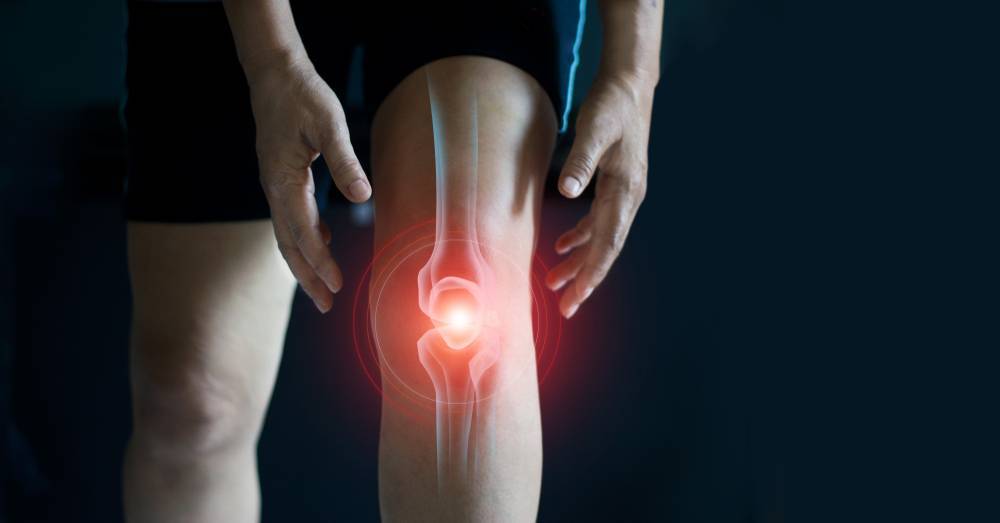Have you ever felt pain or stiffness in your joints, especially in the morning? Do you find it more difficult to move your body parts than before? Have you noticed any redness in any of your joints? You could be suffering from arthritis.
What Is Arthritis?
Arthritis is an inflammation or tenderness that you experience in your joints. It can affect one or any number of joints in your body. It is mostly seen in adults above the age of 65, but in rare cases, even children, teens, and young adults experience arthritis.
What Are The Different Types?
There are more than 100 types of arthritis, but the most common forms are osteoarthritis and rheumatoid arthritis.
Osteoarthritis
This type is caused by the wear and tear of the cartilage in the joints. The cartilage acts as a cushion between the bones and prevents friction while moving. As you age, wear and tear naturally occurs in the cartilage as your bones grind against each other when you move. This can cause severe pain.
Rheumatoid arthritis
In the case of rheumatoid arthritis, the body’s immune system attacks its tissues. This type affects the joint lining, resulting in pain and swelling. Over time, it can even cause bone erosion and joint deformity.
In addition to the above two, other forms of arthritis that are commonly seen are spondylitis, psoriatic arthritis, vasculitis, and seronegative arthritis.
What Are the General Symptoms?
The symptoms of arthritis vary from person to person. However, the commonly experienced symptoms are:
- Joint stiffness resulting in poor joint mobility
- Inflammation of the joint, with or without pain
- Difficulty moving, such as in the knees
- Loss of strength in the fingers
Some people may even experience fever and fatigue, as well as a feeling of uneasiness.
Who Is At Risk Of Developing Arthritis?
You have a risk of developing arthritis if you:
- Have a family history of arthritis: Certain types of arthritis are hereditary. If your parents or siblings are diagnosed with arthritis, there is a higher chance that you might also develop the condition.
- Are above 40 years: The risk of developing arthritis increases with age. If you are above 40 and have a family history of arthritis, you should be watchful of the symptoms.
- Are female: Women are at a higher risk of developing arthritis when compared to men. This is because of the peculiarity of a woman’s body and the unique functions it performs.
- Have injured a joint: If any of your joints have gotten injured previously, perhaps due to an accident, your chances of developing arthritis in that joint are higher.
- Are obese: Excess weight puts undue pressure on your joints, especially the hips, knees, and spine. Prolonged pressure could result in arthritis.
How Can it be Treated?
The main purpose of arthritis treatment is to reduce the pain you experience. Your doctor may prescribe any of the following treatment methods depending on your condition.
Medication
The most commonly used medications include:
- Analgesic: Analgesic is prescribed mainly to reduce pain. Acetaminophen and tramadol are the commonly prescribed analgesics.
- Non-steroidal anti-inflammatory drugs (NSAIDs): These types of drugs reduce both pain and inflammation. The commonly prescribed NSAIDs include ibuprofen and naproxen sodium.
- Counterirritants: These are creams or ointments that contain menthol. Some counterirritants are also available in spray form. Rubbing this on the joints helps to reduce the pain.
- Antirheumatic drugs: Antirheumatic drugs are effective against pain caused by rheumatoid arthritis. These drugs prevent the immune system from attacking the tissue within your joints.
- Corticosteroids: Steroids like prednisone and cortisone are used to suppress the body’s immune system and reduce inflammation.
Surgery
If you are suffering from osteoarthritis, surgery may be another option. Through surgery, the cartilage within the joints that hurt is replaced with artificial ones.
Physical therapy
Physical therapy is recommended to increase mobility and reduce pain. A few of the common types of physical therapy undertaken are:
Exercise: The main purpose of the exercise is to strengthen the muscles around the affected area. These exercises are designed depending on the joint affected and its severity. Sometimes, a hot or cold pack will be applied along with exercise to reduce pain.
Hot/cold application: These are done mainly for treating rheumatoid arthritis. Cold therapy is applied for patients suffering from an acute condition, while hot therapy is done for those suffering from a chronic stage of rheumatoid arthritis.
What Are The Lifestyle Changes Required For Arthritis?
A balanced diet and active lifestyle help in managing arthritis to a great extent. Certain types of food help to reduce inflammation, such as fruits, vegetables, fish, nuts, seeds and whole grains. Try to incorporate those into your diet.
If you are overweight, exercise is recommended to reduce weight. Depending on your physical condition, walking, swimming or cycling are good exercise options.
Adequate rest and sleep help you manage pain and reduce fatigue. Try to get at least 7-8 hours of sleep every day. Avoid caffeine closer to bedtime so that you won’t have difficulty falling asleep.
Lastly, a timely diagnosis is important for arthritis so that you can get the right treatment and make the necessary lifestyle changes as required.

